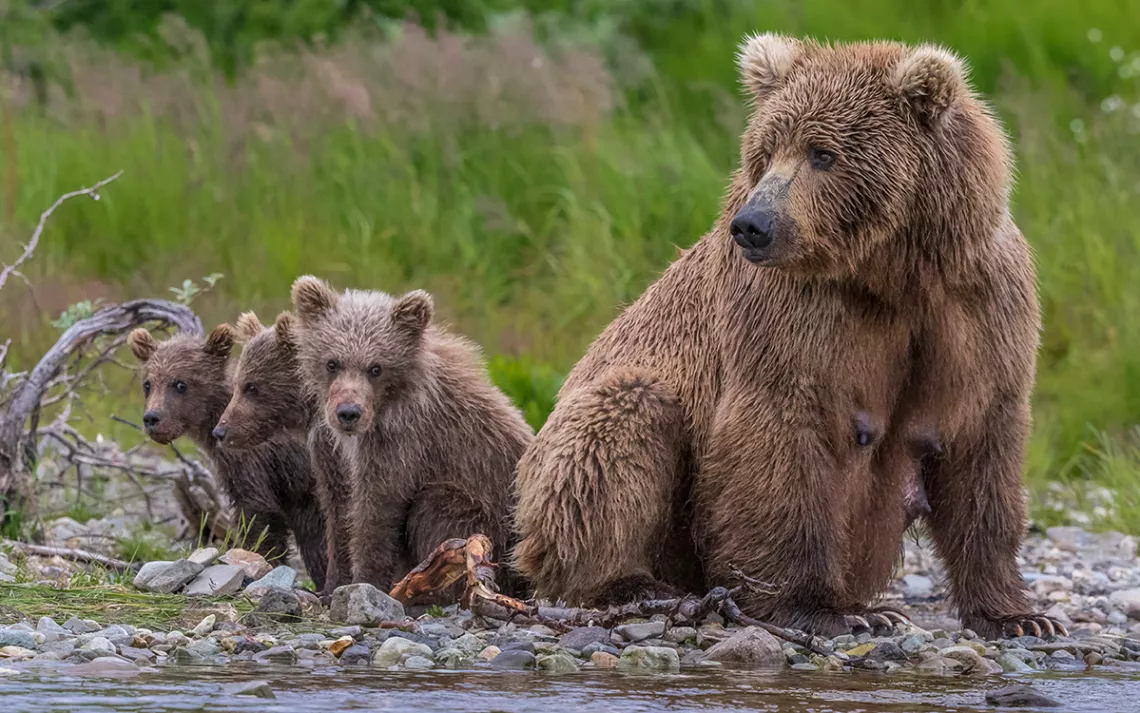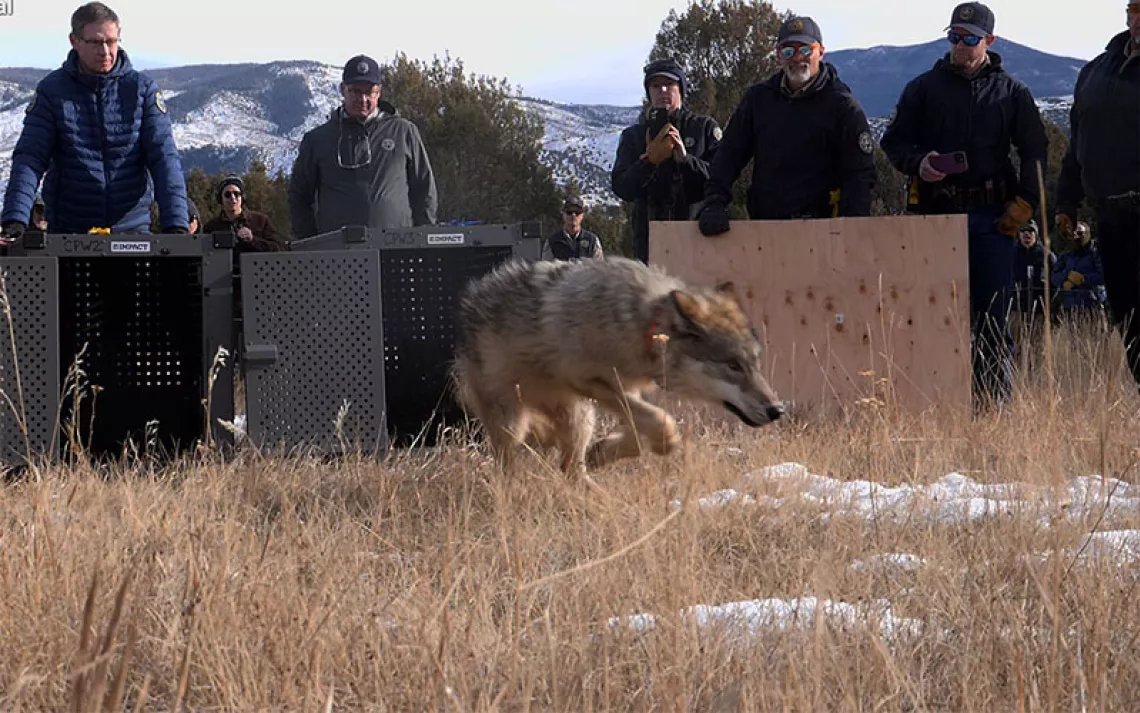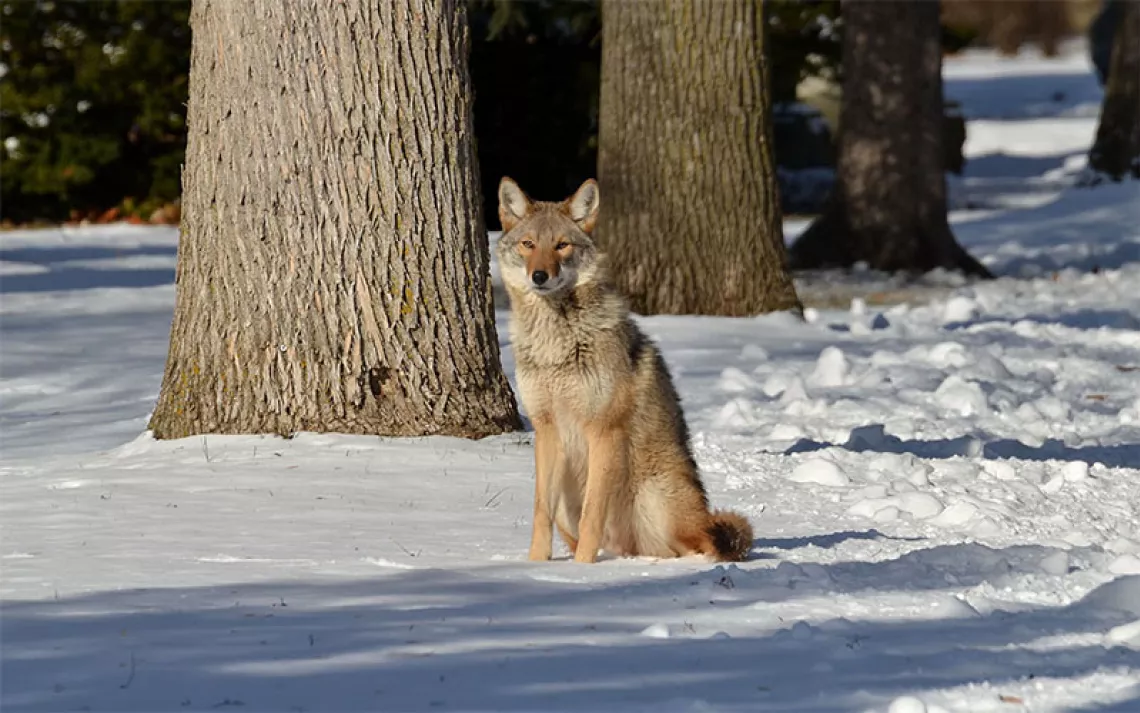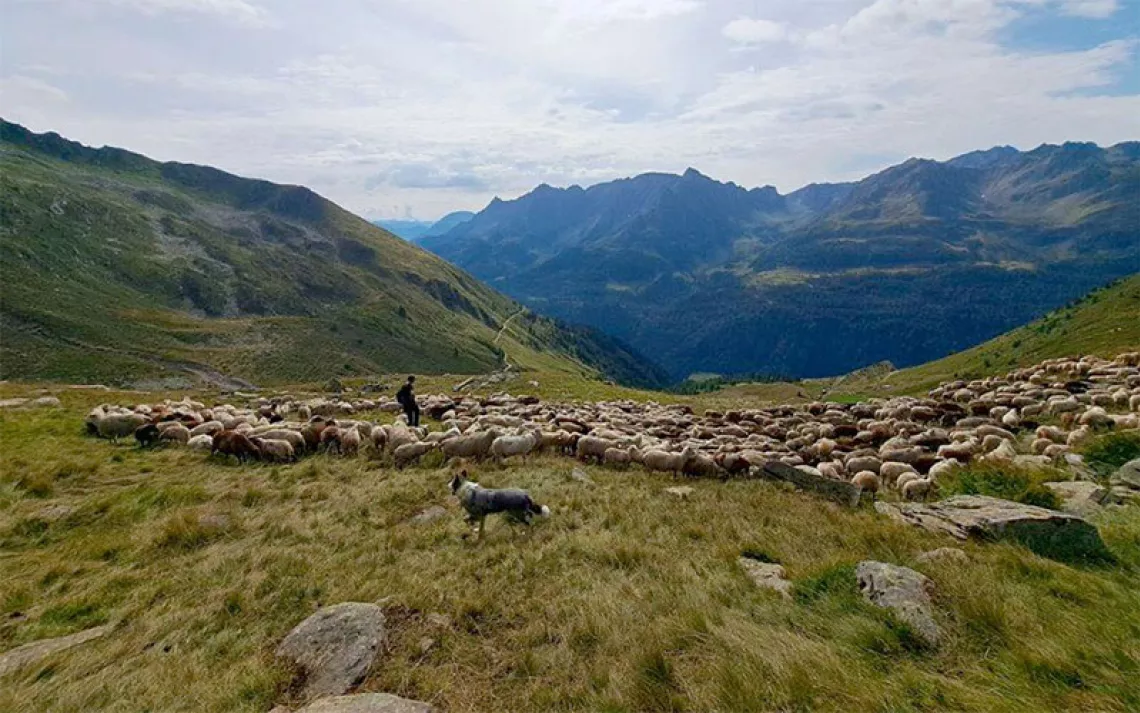Barbaric Hunting Practices to Be Banned in Alaskan National Preserves
The Biden administration moves to end some of the worst methods of killing wildlife

Brown bear and cubs along the river in Katmai, Alaska. | Gavriel Jecan/VWPics via APImages
The Biden administration is poised to end a slate of barbaric hunting practices that are now legal in 10 National Park Service sites in Alaska that cover 20 million acres. Currently, sport and subsistence hunting are allowed in these federal lands, but several state-endorsed hunting methods conflict with federal policy. Wildlife conservation groups have applauded the move as a badly needed step that will prohibit hunting and trapping practices that most other states don’t allow.
Prior presidential administrations had asked Alaska officials to rein in the killing of bear mothers and cubs, the killing of wolf and coyote pups in their dens, and the baiting of bears with human food. But state officials repeatedly refused. Following years of emergency orders to halt many of these practices on federal public lands, the Obama administration banned them in 2015. In 2020, the Trump administration revoked the Obama-era rule. A coalition of conservation groups then sued, asserting that the Trump administration violated several federal statutes in its rule-making. Last year, a judge partially agreed with the conservation groups but stopped short of canceling the Trump policy altogether because, by then, the Biden administration had already hinted that it would revise the rule.
In January, the National Park Service released its proposed revision, which effectively reinstated the 2015 prohibitions. In the proposed rule, the agency said the expanded ways of killing wildlife are not considered an “accepted notion of sport hunting” and are contrary to the federal prohibition on predator control—the policy of killing large predators, such as bears and wolves, to increase populations of hunted species like deer and moose.
“This is all about making sure that the lessons from science, with respect to predators, are implemented in these extraordinary national lands,” said Deborah Williams, a lecturer at UC Santa Barbara’s Environmental Studies Department and former attorney for the National Park Service and the US Fish and Wildlife Service in Alaska. “It's about our national public lands and our ability to make sure that they're managed in a proper way, consistent with congressional intent.”
In addition to banning predator control and bear baiting, the proposed rule also bans several sport hunting practices that NPS considers not in accordance with the principles of fair chase—the philosophy that animals should have a decent chance at escaping their pursuers. Consequently, non-subsistence hunters can no longer pursue swimming animals in a motorized craft; use unleashed dogs; employ artificial lights or snares; or use machine guns. The proposed rule also defines trapping to include only activities where an actual trap is used; the state’s position says people can trap using guns.
To understand the tension between the State of Alaska and federal land managers, it’s important to consider the laws that underpin hunting on national park lands in the state. The most significant one is the Alaska National Interest Lands Conservation Act (ANILCA). It was signed into law four decades ago by President Jimmy Carter to protect 100 million acres across Alaska. But in order to get the bill passed, many concessions were made along the way, including allowing Alaskans to retain the right to hunt on federal lands.
Additionally, the National Organic Act, passed a century ago, directs the NPS to conserve the scenery, natural objects, and wildlife within the national park system while also allowing visitor enjoyment. The balance that the Park Service must strike is what’s at play here, says Rachel Briggs, a staff attorney with Trustees for Alaska, a nonprofit environmental law firm that was a part of the lawsuit against the Trump administration. The varying definitions in federal law and state law have also led to a fraught regulatory framework under which the state has continuously collided with federal regulations.
“ANILCA distinguishes between subsistence hunting, which is protected for local, rural residents, and sport hunting, which is available for all visitors. But state regulations do not make that distinction,” Briggs said. “In addition, the Park Service prohibits any attempt to increase harvest of prey animals by manipulating predators. In contrast, state law requires the state to maximize harvest, including via efforts to reduce predator populations.”
In its eight-page proposed rule, the NPS laid out a litany of reasons why the practices allowed under the Trump administration are both unsafe and unethical. The agency spent a considerable amount of space highlighting how the practice of bear baiting puts both wildlife and people at risk.
The 2020 rule cited a lack of science around the dangers posed by feeding bears human food, such as donuts and bacon grease. In response, the revised rule points to over a dozen testimonials from experts and scientists who say that feeding bears increases the likelihood that they’ll become habituated to people—and possibly even attack them.
In addition, the new rule clarifies why the state’s buffer zones between common trails, paths, and roads and where bear bait can be placed are insufficient for preventing conflict. Despite these buffers, bears travel great distances, the new rule maintains. And people, whether they’re hunters or hikers, tend to use the same access points, so conflict may still arise whenever human-provided food is left out.
The agency also took the time to outline why killing predators is problematic, even though it said killings aren’t likely to impact populations at the species level, as the previous administration argued. Regardless of whether there are dead bodies, it is against park policy to kill native species for the benefit of another species, so the intent is more important than the outcome.
“It’s pretty clear, the legal language of the Organic Act and of ANILCA,” Rick Steiner, a former marine conservation professor with the University of Alaska, said. “The federal government has the right and responsibility to manage wildlife on these lands for natural diversity and natural processes, not for enhancing prey populations.”
And most Americans seem to agree. During the public comment period for the original 2015 rule, the NPS received over 70,000 comments, with 99 percent of commenters indicating support for banning especially cruel practices. Conversely, when the Trump-era NPS issued the 2020 rule that expanded hunting methods, the agency received 35,000 comments, with 99 percent of the commenters opposing the rule. For the new rule, the agency is soliciting comments again, through March 10.
In 2011, the National Park Service reported that 1.6 million people visited the state during the summer months alone to see the landscapes and wildlife that make the Alaskan wilderness such a destination for adventure lovers. Nature-based recreation generates nearly $2 billion annually and creates jobs for almost 40,000 Alaskans.
Beyond the economic value, there’s also a moral obligation to end the persecution of America’s most iconic predators, say conservation advocates who welcome the new rule. Updated science shows that killing wolf pack members and bear mothers can have detrimental impacts on family structure and behavior.
“[Predator control] is an outdated concept. Most people, including many wildlife scientists, agree,” Steiner added. “And predator control is seldom even effective. And when it is, it destabilizes natural ecosystems; it can result in an overpopulation of prey populations, and that has happened in many places. So, it's a management tool that needs to die.”
 The Magazine of The Sierra Club
The Magazine of The Sierra Club



